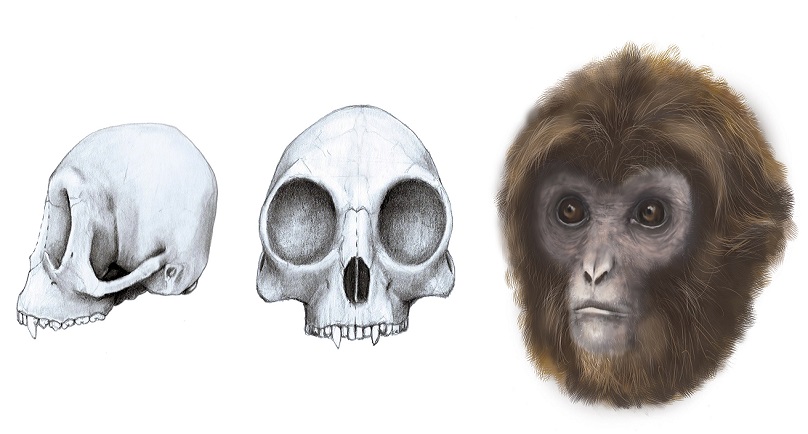Image: The extinct ape Pliobates cataloniae, with the front and side view of its skull, is seen in this reconstruction illustration by the Catalan Institute of Paleontology near Barcelona. REUTERS/Marta Palmero/Institut Catala de Paleontologia Miquel Crusafont (ICP)/Handout via Reuters
By Will Dunham
WASHINGTON (Reuters) – The well-preserved partial skull and skeleton of a gibbon-like creature that lived 11.6 million years ago in Spain is shedding new light on the evolutionary history of modern apes.
Scientists on Thursday announced the discovery in Catalonia of fossil remains of a small, fruit-eating female ape that lived in a warm, wet forested region teeming with animals including elephant relatives, rhinos and saber-toothed predators.
They gave the ape, weighing 9-11 pounds (4-5 kg), the scientific name Pliobates cataloniae and the nickname “Laia.”
“There is no living primate like Pliobates, which exhibits a unique combination of modern ape-like features with other, more primitive ones,” said paleobiologist David Alba of the Catalan Institute of Paleontology near Barcelona.
“We can imagine a small ape, like the smallest living gibbons, with a gibbon-like appearance regarding the cranium but with different body proportions: less elongated arms and hands.”
Alba said Pliobates, which lived during the Miocene epoch, moved through the forest canopy differently than today’s gibbons, using slow and cautious climbing, like a loris, a more primitive primate, while sometimes hanging below branches.
The remains include 70 bones or bone fragments including a skull exceptionally complete for a primate from that time.
Its teeth look primitive compared to today’s apes including both the small-bodied “lesser apes” like gibbons and siamangs and the larger-bodied “great apes” like orangutans, gorillas and chimpanzees.
Its skull exhibits features including overall shape similar to today’s apes, although it more closely resembles gibbons than great apes. Its elbow and wrist are similar to today’s apes. But the external bony ear is more primitive than in living apes and monkeys.
“Pliobates suggests that small-bodied apes played a much more important role in the origin of extant apes than previously recognized, and that their last common ancestor, in several respects, skull shape and body size, might have been more gibbon-like than previously thought,” Alba said.
Gibbons are small, arboreal apes from rainforests in parts of Asia.
Alba said the evolutionary divergence of gibbons and great apes occurred between 20 and 15 million years ago, meaning
Pliobates because of its age cannot be the last common ancestor of today’s apes and the human lineage.
But Pliobates may have descended from an ape that lived just before this evolutionary split. “As a result, Pliobates gives us insight as to how this common ancestor would have been,” Alba said.
The research appears in the journal Science.
(Reporting by Will Dunham; Editing by Sandra Maler)
Copyright 2015 Thomson Reuters. Click for Restrictions.


